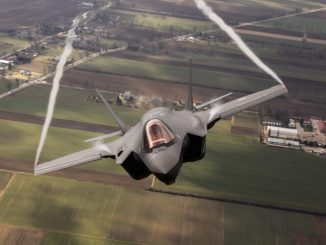
Pokrovsk may become the greatest Russian conquest in 2025.
| Published July 28, 2025
As the sun sets over the shattered skyline of Donetsk Oblast, the battle for Pokrovsk intensifies—drawing in thousands of soldiers, drones, artillery units, and the fate of Ukraine’s eastern defense line. Once a quiet railway city known for its mining and transport links, Pokrovsk has now become the latest crucible of war, a strategic prize both Kyiv and Moscow are unwilling to yield. Russian forces have gradually encircled the city, tightening their grip through attrition and tactical maneuvering, while Ukrainian defenders brace for what could be one of the most decisive confrontations of the war in 2025. The siege of Pokrovsk is more than a military operation—it is a fight for momentum, supply routes, and ultimately, the control of eastern Ukraine.
🔥 The Strategic Crucible: Why Pokrovsk Matters
Pokrovsk is a key logistics and railway hub in Donetsk Oblast, critical for Ukrainian supply routes to cities like Kostiantynivka, Chasiv Yar, Kramatorsk and Sloviansk.. Sitting atop Ukraine’s last fortified belt in the region, its capture would expose the rest of Donetsk to Russian advances.. Additionally, just west of the city lies Ukraine’s only coking‑coal mine—vital to steel production, loss of which would severely harm industrial capacity.
Control of Pokrovsk would disrupt Ukrainian supply lines, provide a springboard for attacks into Dnipropetrovsk (such as Dnipro and Zaporizhzhia), and potentially trigger a broader collapse of Donetsk’s defense lines.
⏳ Timeline: From Approaches to Encirclement
-
Russian forces reached the outskirts of Pokrovsk in October 2024 and launched a sustained effort to encircle and assault the city.
-
Skirmishes expanded into early 2025, with limited advances and positioning in nearby settlements like Zvirove, Novoekonomichne and Novotoretske.
-
By late July 2025, Russian troops had partially encircled about 60–75% of the city’s perimeter, consolidating positions in nearby villages to tighten the noose.
🧭 Russian Strategy: Attrition, Envelopment, and Logistics Pressure
Analysts describe Russia’s current posture as grinding forward through small infantry groups and sabotage teams, supported by artillery, glide bombs, and drones—shifting away from mechanized assaults toward high-cost attritional tactics
The effort appears intended to envelop from the east and southwest, closing gaps gradually instead of mounting a direct assault. This posture has been compared to previous Russian sieges, including Selidovo and Bakhmut
🛡️ Ukrainian Defense: Holding Fast Under Pressure
Ukraine’s defenders—the National Guard and regular units—are holding defense lines under relentless pressure. They have used defensive drone deployments effectively to slow Russian armored advances, especially during mid‑2024 offensives.
Despite acute shortages in artillery ammunition and mechanized reserves, Ukrainian forces have held key buffer zones, particularly around settlements like Hrodivka and Myrolyubivka, delaying full encirclement.

Russian forces preparing a multi-vector attack on the city.

Russian forces first reached the vicinity of Pokrovsk in October, 2024.
📌 Pokrovsk Targeted: Russian FAB Bombs Devastate Ukrainian Deployment Point
On July 27, Russian FAB glide bombs struck a Ukrainian temporary deployment site in Pokrovsk (48.258277, 37.183710), inflicting heavy losses on personnel and equipment. The strike reinforces Russia’s… pic.twitter.com/l3vc5V8Kpy
— Henri Josué 🇫🇷 The opinion 🇩🇰 (@ThetruthDW) July 27, 2025
 The Fall—or Survival—of a Strategic Stronghold
The Fall—or Survival—of a Strategic Stronghold
The battle for Pokrovsk is not just a clash over a city—it’s a high-stakes contest that could reshape the broader trajectory of the war in eastern Ukraine. The outcome carries far-reaching implications across multiple dimensions:
🔁 Collapse of Ukraine’s Eastern Defense Line
Pokrovsk anchors one of Ukraine’s last fortified belts in Donetsk. Should the city fall, the Ukrainian military could be forced to abandon key defensive positions further east—namely Chasiv Yar, Kostiantynivka, Sloviansk, and Kramatorsk. This would allow Russian forces a more direct path into central Ukraine, increasing the risk of a cascading withdrawal.
🛣️ Strategic Loss of Transport and Logistics Routes
As a major rail and highway hub, Pokrovsk is vital for moving troops, fuel, and equipment. Its capture would sever Ukraine’s east-west logistical flow and isolate defensive positions. Russian control of these corridors could speed up future offensives into Dnipropetrovsk and Zaporizhzhia regions—both of which remain essential to Ukraine’s war effort and industrial capacity.
🏭 Economic Disruption Through Resource Denial
Nearby coal and industrial infrastructure—particularly Ukraine’s last major coking coal mine—would fall into Russian hands. This would further strain Ukraine’s steel and energy production, with ripple effects on national defense manufacturing and post-war recovery.
🧭 Momentum Shift in Russia’s Favor
A Russian victory in Pokrovsk would mark a significant psychological and operational gain. Coming on the heels of recent advances, it could boost troop morale, validate Russia’s attritional tactics, and place pressure on Ukraine’s Western allies to rethink aid timelines and commitments.
🎯 Pressure on Kyiv to Respond
Faced with partial encirclement, Ukrainian commanders must choose between launching a costly counterattack or withdrawing to save troops. Either decision carries risk: counteroffensives could exhaust limited reserves, while withdrawal would hand Russia a propaganda and tactical victory.
🌍 Geopolitical Ripples
A major breakthrough for Russia could alter global perceptions of the war’s balance. Nations on the fence about supporting Ukraine may hesitate further. Meanwhile, NATO’s eastern flank would grow more anxious, prompting discussions about deeper involvement—or red lines.
 Overall Takeaway:
Overall Takeaway:
As Russian forces close in on Pokrovsk from multiple axes, the battle for this critical city enters a defining phase—not only for eastern Ukraine but for the broader course of the war. With its partial encirclement nearly complete, Pokrovsk now stands as the last major obstacle before the vast plains leading to the Dnieper River.
Ukraine’s defenders are holding fast, but under relentless pressure from artillery, drones, and infantry assaults, their options are narrowing. A successful Russian takeover could fracture Ukraine’s eastern front, sever vital supply lines, and accelerate the Kremlin’s long-term objective of dominating Donetsk and beyond.
Yet, the fall of Pokrovsk is not inevitable. The coming weeks will test Ukraine’s ability to respond strategically, redeploy reserves, and possibly mount a counteroffensive to break the siege. The stakes are immense—not just for Kyiv and Moscow, but for the geopolitical balance in Europe and the resolve of the West.
As the city braces for the next wave of combat, Pokrovsk has become more than a battlefield—it is now a symbol of resistance, resolve, and the high cost of territory in a war defined by inches and attrition.
SOURCES: THE GATEWAY PUNDIT – SIEGE OF POKROVSK: Russian Forces Encircle Key Stronghold, Reach Its Outskirts – City is a Key Logistics Hub and the Last Fortified Bastion Before the Dnieper River (VIDEOS)
REUTERS – Pokrovsk: why is Russia trying so hard to capture strategic city in Ukraine?
NEWSWEEK – Ukraine War Map, Update: Russia Attacks Inside ‘Fortress City’ Pokrovsk





Be the first to comment